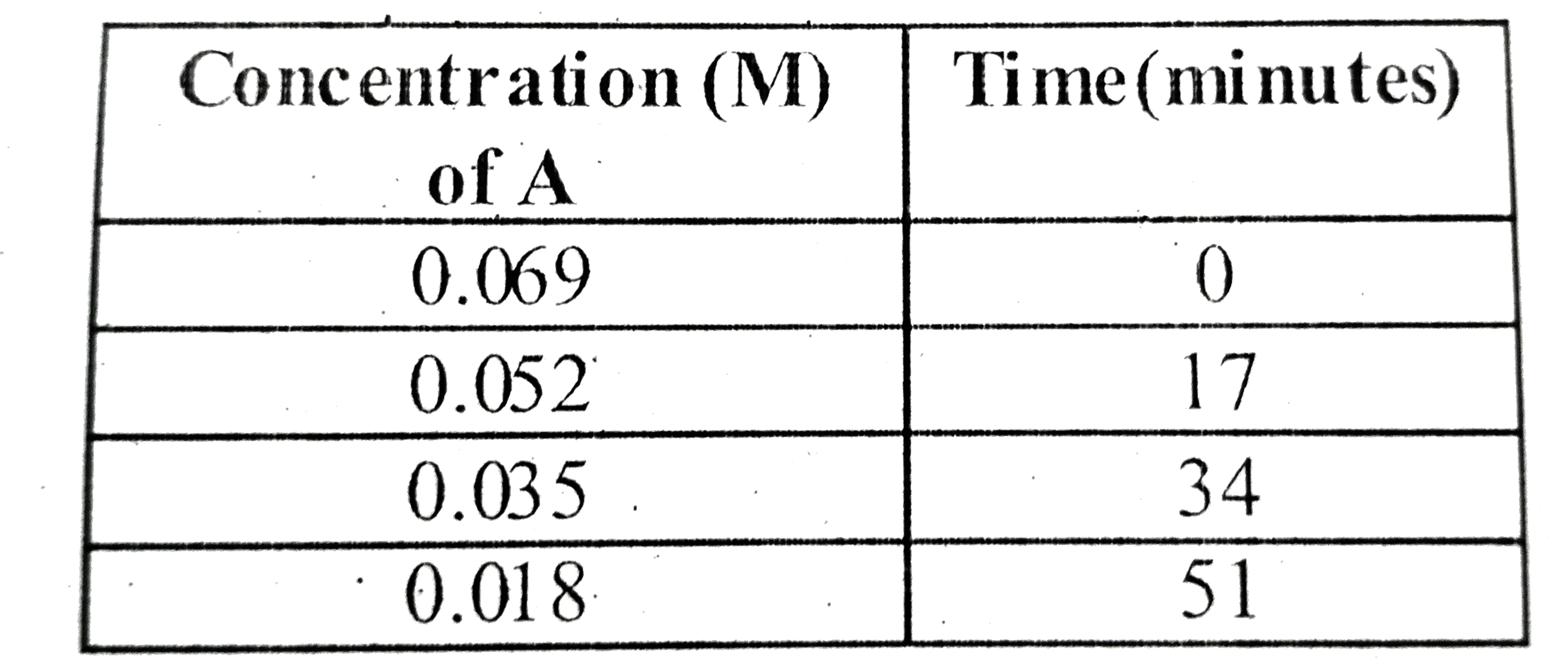A reaction involving two different reactants can never be:
(a) Second order reaction
(b) Bimolecular reaction
(c) Unimolecular reaction
(d) First order reaction
The correct Answer is:C
To solve the question "A reaction involving two different reactants can never be:", we need to analyze the concepts of molecularity and order of reaction.
1. Understanding Molecularity:
- Molecularity refers to the number of reactant molecules that collide to form products in a reaction.
- It is classified as:
- Unimolecular: Involves one reactant molecule (e.g., A → products).
- Bimolecular: Involves two reactant molecules (e.g., A + B → products).
- Termolecular: Involves three reactant molecules (less common).
2. Identifying the Reactants:
- The question specifies that we have two different reactants, which we can denote as A and B.
3. Determining the Molecularity:
- Since we have two different reactants (A and B), the reaction must involve a collision between these two molecules.
- Therefore, the molecularity of the reaction is bimolecular.
4. Understanding Reaction Order:
- The order of a reaction is the sum of the powers of the concentration terms in the rate law expression.
- For a bimolecular reaction involving A and B, the rate law can be expressed as:
Rate=k(A)m(B)n
- Here, m and n can be 1, leading to an overall order of 2 (second order), or one of the reactants can be in excess, leading to a pseudo-unimolecular reaction (first order).
5. Conclusion:
- Since the reaction involves two different reactants, it cannot be unimolecular.
- Therefore, the correct answer to the question is that a reaction involving two different reactants can never be unimolecular.
Final Answer:
A reaction involving two different reactants can never be unimolecular.
---
- Molecularity refers to the number of reactant molecules that collide to form products in a reaction.
- It is classified as:
- Unimolecular: Involves one reactant molecule (e.g., A → products).
- Bimolecular: Involves two reactant molecules (e.g., A + B → products).
- Termolecular: Involves three reactant molecules (less common).
- The question specifies that we have two different reactants, which we can denote as A and B.
- Since we have two different reactants (A and B), the reaction must involve a collision between these two molecules.
- Therefore, the molecularity of the reaction is bimolecular.
- The order of a reaction is the sum of the powers of the concentration terms in the rate law expression.
- For a bimolecular reaction involving A and B, the rate law can be expressed as:
Rate=k(A)m(B)n
- Here, m and n can be 1, leading to an overall order of 2 (second order), or one of the reactants can be in excess, leading to a pseudo-unimolecular reaction (first order).
- Since the reaction involves two different reactants, it cannot be unimolecular.
- Therefore, the correct answer to the question is that a reaction involving two different reactants can never be unimolecular.
A reaction involving two different reactants can never be unimolecular.
Topper's Solved these Questions
- CHEMICAL KINETICSBOOK - AAKASH INSTITUTE ENGLISHCHAPTER - CHEMICAL KINETICSEXERCISE - ASSIGNMENT (SECTION B : Objective Type Questions)
20 Videos
- CHEMICAL KINETICSBOOK - AAKASH INSTITUTE ENGLISHCHAPTER - CHEMICAL KINETICSEXERCISE - ASSIGNMENT (SECTION C : Previous Year Questions)
62 Videos
- CHEMICAL KINETICSBOOK - AAKASH INSTITUTE ENGLISHCHAPTER - CHEMICAL KINETICSEXERCISE - EXERCISE
30 Videos
- CHEMICAL BONDING AND MOLECULAR STRUCTURE BOOK - AAKASH INSTITUTE ENGLISHCHAPTER - CHEMICAL BONDING AND MOLECULAR STRUCTURE EXERCISE - Assignment Section J (Aakash Challengers Questions)
10 Videos
- CHEMISTRY IN EVERYDAY LIFE BOOK - AAKASH INSTITUTE ENGLISHCHAPTER - CHEMISTRY IN EVERYDAY LIFE EXERCISE - Assignment ( SECTION - A)
45 Videos
Similar Questions
Knowledge Check
 reactant (A) can be :A
reactant (A) can be :A B
B C
C DAll of these
DAll of these
Give balance equations for -i. A direct combination reaction involving two elements, one of which is a non metal ii. A thermal decomposition reaction involving heat on limestone [calcium carbonate] iii. An electrolytic decombosition reaction involving a neutral liquid iv. A displacement reaction involving a metal above hydrogen in the activity series with copper [II] sulphate solution v. A double decomposition neutralization reaction involving an acid & a base vi. A white precipitate obtained during a double decomposition reaction involving a silver salt with a sodium salt.
View SolutionIf a reaction involves gaseous reactants and Products, the units of its rate are
View SolutionStatement A : Action and reaction act on two different bodies
Statement B : Action, reaction never cancel each other
View SolutionStatement A : Action and reaction act on two different bodies
Statement B : Action, reaction never cancel each other
View SolutionThe concentrations of the reactant A in the reaction A →B at different times are given below:

The rate constant of the reaction according to the correct order of reaction is :
View SolutionThe reaction, A + B → P can never be
View SolutionThe rate of reaction between two reactants A and B decreases by factor 4 if the concentration of reactant B is doubled. The order of this reaction with respect to B is
View Solution
